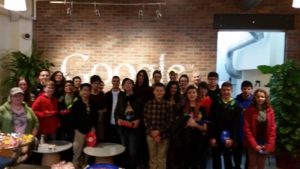
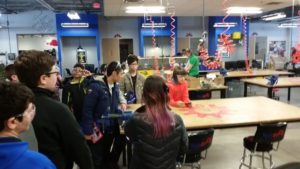
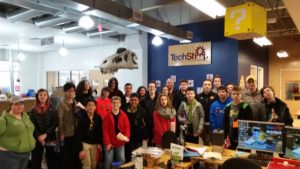 This past weekend, a group of middle school and high school students participated in a STEM Careers Tour of Google and TechShop Pittsburgh. What a exciting day!
This past weekend, a group of middle school and high school students participated in a STEM Careers Tour of Google and TechShop Pittsburgh. What a exciting day!
Our first stop was Google located in the old Nabisco factory in Pittsburgh’s East End. Google is celebrating its tenth anniversary in Pittsburgh and now employs nearly 500 people!
For the first part of our tour we participated in a hand’s on programming activity. We worked in teams programming in the language of our choice (JavaScript or Python) in the browser game CodeCombat. It was fun to see how many levels we could accomplish in our group. Our programming guide mentioned that computer scientists just can’t ‘google’ an answer when they get stuck with their programming code, so there is a lot of discovery that is required in their work. He also mentioned that it is okay for them to fail, but they need to look at their failures and understand why they occurred.
After our entertaining introduction to computer programming, we attended a question and answer session with several Google employees that included software engineers and product technology managers, all with a degree in computer science. We learned so much about Google! When asked where they see Google in 10 years, the panel said that they look to us to determine that. They could not have predicted where Google would be today ten years ago…smartphones have changed everything. The work environment at Google is team based with a lot of collaboration. Everyone has access to everyone else’s code. When asked about the Google Doodle, we learned that there is a specific team dedicated to determining what, where, and when the Google Doodle will be shown, and they have complete autonomy to choose. The computer programmers also mentioned that they have no fear of artificial intelligence taking over the world. They said that there are so many limitations that exist. When looking for employees, along with being super smart, Google also values people who are helpful, respectful, trustworthy, and passionate. They look for people who will fit into their culture, but not people who are identical to everyone else. They value diversity.
For the last part of our visit we toured of the amazing offices at Google. There are no closed offices at the site, and each floor of the building has a specific Pittsburgh theme: from the Nabisco factory to Kennywood to a floor paying tribute to Pittsburgh’s bridges. The conference room names and hallway decor are filled with design elements that reflect their floor’s theme. Walking from the 6th to the 7th floor feels like you walking up the ramp to ride the Jack Rabbit! Food is also a major part of the Google work environment. To ensure that discomforts don’t become distractions, Google has mini-kitchens stocked with food near all work spaces. Healthy food options are left in plain view for employees to take, while the not-so-healthy options are present, but a bit harder to find. Google also provides breakfast, lunch and dinner to the employees at no cost! Each Google office has one unique design feature and the Pittsburgh office is no different. A large cargo net is suspended from the ceiling to provide a very different meeting space, resting place, or whatever space. Believe it or not, but Google Pittsburgh also keeps their own chickens housed on the roof and their own bees for fresh honey. What an amazing work environment!
The next stop on our STEM Careers Tour was Techshop Pittsburgh located across the street from Google. TechShop Pittsburgh is a do-it-yourself makerspace, where you can create anything that you can imagine. There is equipment for woodworking, laser cutters, 3D printers, a metal shop, sewing machines, a waterjet cutter, an injection molding machine, and a plastic extruder. For a membership fee you have access to training and use of all this equipment, but you can also pay-as-you-go for workshops, classes and camps. Entrepreneurs, artisans and inventors are all welcome to create their masterpieces. You bring your idea, and TechShop provides the access, knowledge and speed. There are currently ~500 members at the Pittsburgh site and membership starts $150 per month. With someone to teach you how to use the tools you can get from idea to creation in very little time!
What an awesome day! If you are feeling inspired to continue learning computer programming, check out Google CS First at www.cs-first.com and start your own computer science club. Who knows, maybe one day you’ll be hanging out in a cargo net writing code.
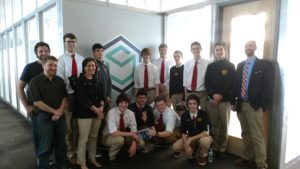 On Friday, February 17th, 2017, several North Catholic students began their venture into the Computer Science field with a visit to ContainerShip. Found in Oakland Pittsburgh, ContainerShip is a Multi-Cloud Automated Server, in other words ContainerShip gets rid of the hassle and brings anything you could desire onto the Internet and into the public’s hands.
On Friday, February 17th, 2017, several North Catholic students began their venture into the Computer Science field with a visit to ContainerShip. Found in Oakland Pittsburgh, ContainerShip is a Multi-Cloud Automated Server, in other words ContainerShip gets rid of the hassle and brings anything you could desire onto the Internet and into the public’s hands.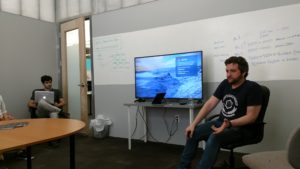 Phil Dougherty explained how there is traffic when it comes to the Internet, sometimes a website may undergo millions of visits from different users in a sort of rush hour sense while on the contrary the same website may experience times when there is no one on their website. ContainerShip aids in traffic control by opening up more servers and connections like roads for the traffic to go through so the website or app can maintain peak performance.
Phil Dougherty explained how there is traffic when it comes to the Internet, sometimes a website may undergo millions of visits from different users in a sort of rush hour sense while on the contrary the same website may experience times when there is no one on their website. ContainerShip aids in traffic control by opening up more servers and connections like roads for the traffic to go through so the website or app can maintain peak performance.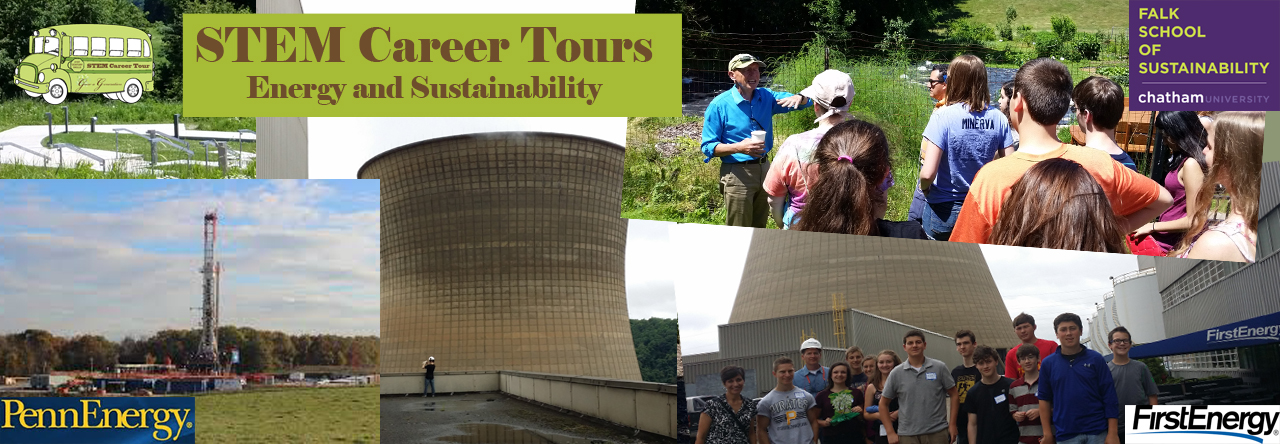
 AP Biology students from Cardinal Wuerl North Catholic High School visited the Department of Structural Biology at the University of Pittsburgh. Students were led on a tour by Dr. Rieko Ishima, an associate professor and a principal investigator in the department. Dr. Ishima oversees a team of research associates and fellows who are currently working to determine protein structure and dynamics using nuclear magnetic resonance.
AP Biology students from Cardinal Wuerl North Catholic High School visited the Department of Structural Biology at the University of Pittsburgh. Students were led on a tour by Dr. Rieko Ishima, an associate professor and a principal investigator in the department. Dr. Ishima oversees a team of research associates and fellows who are currently working to determine protein structure and dynamics using nuclear magnetic resonance.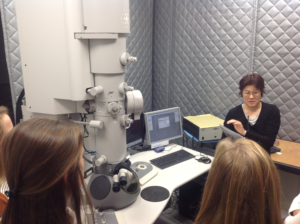
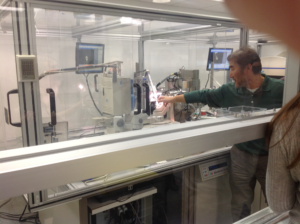 During Dr. Ishima’s tour, students were shown various equipment used in cryo-electron microscopy, nuclear magnetic resonance, and x-ray crystallography. Students were fascinated not only by the incredible detail achieved in the digital images produced by nuclear magnetic resonance (NMR), but also by the sheer size of the equipment required to generate those results.
During Dr. Ishima’s tour, students were shown various equipment used in cryo-electron microscopy, nuclear magnetic resonance, and x-ray crystallography. Students were fascinated not only by the incredible detail achieved in the digital images produced by nuclear magnetic resonance (NMR), but also by the sheer size of the equipment required to generate those results.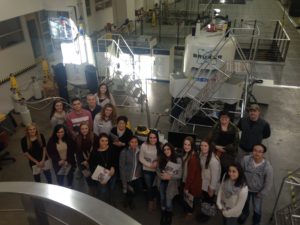 Though NMR examines molecular structure and dynamics at the atomic level, the spectrometers required to view particles that small are extremely large. Pitt has seven spectrometers in this department, and they are housed in 10,000 square foot laboratory. The students were amazed to learn that when the spectrometers were delivered, the first floor windows were removed to allow the equipment to be lowered into the NMR lab! We are standing in front of a two magnets that had to be lowered by crane through an open window.
Though NMR examines molecular structure and dynamics at the atomic level, the spectrometers required to view particles that small are extremely large. Pitt has seven spectrometers in this department, and they are housed in 10,000 square foot laboratory. The students were amazed to learn that when the spectrometers were delivered, the first floor windows were removed to allow the equipment to be lowered into the NMR lab! We are standing in front of a two magnets that had to be lowered by crane through an open window.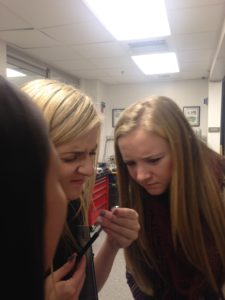 Students were also able to tour the cryo-electron microscope facility, where three electron microscopes allow researchers to engage in structural analysis of proteins, viruses, cellular organelles and bacterial cells. Finally, Dr. Ishima and her team led students to the x-ray crystallography lab. Here, researchers are able to grow, store, and monitor crystals. Once crystals are ready for analysis, x-ray beams and image plate detectors are used to collect data about protein structures at the atomic level. While scientists in the lab often use tiny tools to manually transfer crystals for analysis, the lab also is equipped with a robot that can mount and collect data from up to 80 crystals for rapid analysis.
Students were also able to tour the cryo-electron microscope facility, where three electron microscopes allow researchers to engage in structural analysis of proteins, viruses, cellular organelles and bacterial cells. Finally, Dr. Ishima and her team led students to the x-ray crystallography lab. Here, researchers are able to grow, store, and monitor crystals. Once crystals are ready for analysis, x-ray beams and image plate detectors are used to collect data about protein structures at the atomic level. While scientists in the lab often use tiny tools to manually transfer crystals for analysis, the lab also is equipped with a robot that can mount and collect data from up to 80 crystals for rapid analysis.

 This past weekend, a group of middle school and high school students participated in a STEM Careers Tour of Google and TechShop Pittsburgh. What a exciting day!
This past weekend, a group of middle school and high school students participated in a STEM Careers Tour of Google and TechShop Pittsburgh. What a exciting day!
 Andrew N. Liveris, Dow’s chairman and chief executive officer, said of the commitment, “Dow has survived and thrived for more than a century because of the strength of our innovation engine, built on a foundation of STEM talent. Investing in the education of our youth means investing in our shared future and the future of our Company. There is no better way to inspire children to pursue careers in STEM than through the hands-on project based learning experiences thatFIRST provides.”
Andrew N. Liveris, Dow’s chairman and chief executive officer, said of the commitment, “Dow has survived and thrived for more than a century because of the strength of our innovation engine, built on a foundation of STEM talent. Investing in the education of our youth means investing in our shared future and the future of our Company. There is no better way to inspire children to pursue careers in STEM than through the hands-on project based learning experiences thatFIRST provides.”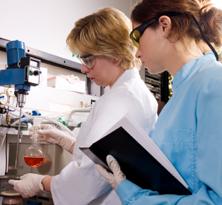 They’ve achieve a lot in only 4 years, including the regularly updated
They’ve achieve a lot in only 4 years, including the regularly updated